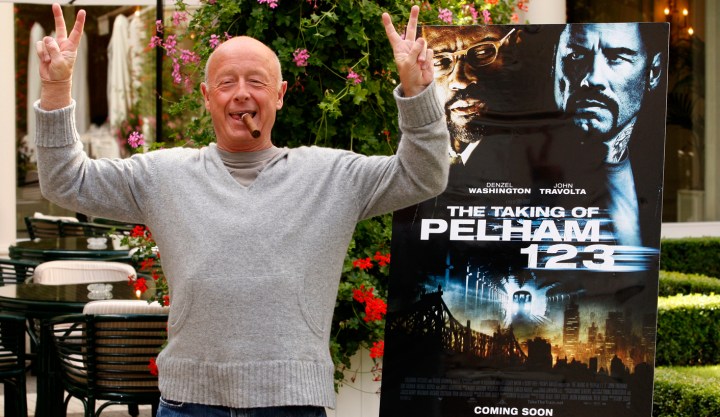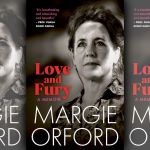Maverick Life
Tony Scott, master of cinematic chaos, checks out on his own terms

Of all Hollywood A-list big budget hacks—Spielberg, Bay, Lucas, Nolan—the least tortured, the most self-assured, seemed to be Tony Scott. He of Top Gun, Crimson Tide and Unstoppable appeared, well, unstoppable. All the flash, all the pizzazz, all of it was wielded by an apparently tortured soul. At 68, Tony Scott is a suicide. By RICHARD POPLAK.
In a lengthy jeremiad on the state of modern industrial American filmmaking, called The Day the Movies Died, writer Mike Harris asked, “How did Hollywood get here? There’s no overarching theory, no readily identifiable villain, no single moment to which the current combination of caution, despair and underachievement that defines studio thinking can be traced. But let’s pick one anyway: Top Gun.”
This may have been unfair—it’s hard to determine the onset of any pathology, and even harder when it comes to culture, but you could see Harris’s point. Top Gun afterburned its way into cinemas in 1986, devoid of sense, accuracy and anything resembling balance. It was perhaps the most American film ever made, and its real star—Tom Cruise notwithstanding—was Ronald Reagan, whose weltschmerz was all over the screen: high-flying F-14 Tomcats; Maverick’s go-it-alone ethos; Meg Ryan.
“The man calling the shots may have been Tony Scott, but the film’s real auteurs,” wrote Harris, “were producers Don Simpson and Jerry Bruckheimer, two men who pioneered the ‘high-concept’ blockbuster—films for which the trailer or even the tagline told the story instantly. At their most basic, their movies weren’t movies; they were pure product—stitched-together amalgams of amphetamine action beats, star casting, music videos and a diamond-hard laminate of technological adrenaline all designed to distract you from their lack of internal coherence, narrative credibility, or recognizable human qualities. They were rails of celluloid cocaine with only one goal: the transient heightening of sensation.”
Tony Scott specialised in rails of celluloid cocaine. He chopped line after line, and moviegoers snorted over a billion dollars worth. He remains one of the most commercially successful Hollywood directors of all time. Despite Top Gun, he made his mark as a director of hard-R violent Hollywood spectacle—he did not direct kid pics, dramas, or PG-13 superhero fantasies. He worked with Denzel Washington five times, turning him into a box-office brand, and made two of Gene Hackman’s highest grossing films. His passion was high-powered machinery, and he shot a Nascar pic, a submarine thriller, and about 8-million automobile crashes. His career included 16 films, a number of TV series, and countless commercials. As much as any of his peers, Tony Scott defined postmodern cinema.
Scott was born in North Shields, England, in 1944. Seven years younger than his brother, the Alien and Blade Runner auteur Ridley Scott, he started out in the arts, looking to become a painter. Trailing his brother through art school—and starring in his first short, Boy and Bicycle, he was pulled into the legendary Ridley Scott Associates as a commercial director. The British advert biz produced some exceptional directors, many of whom were noticed either by the British film industry or, just as often, Hollywood. Hugh Hudson (Chariots of Fire), Alan Parker (Midnight Express, Angel Heart) and Adrian Lyne (9 weeks, Fatal Attraction). Tony was noticed, and his first film, the vampire thriller The Hunger starring Catherine Deneuve, Susan Sarandon and David Bowie, was a critical and commercial disaster. Visually arresting, The Hunger now stands up as a racy cult classic, but it put Tony in limbo for more than two years.
He was saved by an iconic Saab commercial, in which one of the yuppie Scandinavian wagons races a jet fighter, catching Don Simpson and Jerry Bruckheimer’s eye. He was at first reluctant to shoot Top Gun—unsurprising considering how ridiculous the script was. But the film is one of the biggest smash hits in Hollywood history—adjusted for today’s dollars, it would sit comfortably alongside The Avengers as a filmic phenomenon. But it did nothing to ingratiate Tony with critics. (“Look out for the scenes in which people talk to one another,” wrote Roger Ebert.)
Watch: Top Gun trailer
He followed up with his only sequel, one he shot because he was desperate to work with Eddy Murphy. Beverly Hills Cop II was a hit that further distanced him from Truffaut, to say nothing of his brother, who had Alien and Blade Runner in his filmography at this point. Days of Thunder, another broody Cruise pic, and the ghastly Revenge followed. Bruce Willis vehicle The Last Boy Scout was so histrionically violent, and patently awful, that it put Tony further in the dog box.
Then came True Romance (1993). Penned by Quentin Tarantino, it reset the violence bar, already raised by Tony, and opened up a new conversation about onscreen mayhem. Grossing only $12 million, it remains one of the most discussed films of the ’90s and influential far beyond its worth or its box office returns. Then, the very good submarine thriller Crimson Tide, which established Denzel Washington as one of the first cross-over black male stars. He traded outright dogs (Domino) with some fine prestige pics (Spy Game), culminating in last year’s out-of-control train thriller Unstoppable, which landed somewhere in the middle of his oeuvre.
A principal in Scott Free Productions, along with his brother, he had his hand in a number of television shows, including the superb Good Wife. And considering he had lived the Hollywood dream for close on 25 years, there was nothing to suggest that Scott was unhappy. Sure, he was critically loathed, and blamed for everything from Tom Cruise’s couch jumping to anything Michael Bay did, but over a billion dollars in box office bucks seemed like decent compensation for being Hollywood’s favourite punching bag.
There were no quiet moments in Tony’s films. No time for reflection, or for philosophical rambling. Just action, filmed in such a herky-jerk style that it resembled chaos. His camera was always in a rush, always taking in some moment of mayhem that didn’t reference real life so much as it referenced the movies. He was a consummate postmodernist, cynical beyond measure, an aesthetic maven without any aesthetic class. But he defined a generation of filmmaking, putting his stamp on industrial Hollywood product as surely as did any of his peers. We all have a Tony Scott moment tattooed on our cerebral cortex. For better or for worse, that is his impressive legacy. We never expected him to go away, and he won’t, even though he chose to end his life. It’s a shame he didn’t see a reason to keep the cameras rolling. There was probably a masterpiece lurking in Tony Scott. Or a sequel to Top Gun. DM
Photo: Tony Scott poses during a photocall to promote “The Taking of Pelham 123” in Paris July 20, 2009. REUTERS/Benoit Tessier

















 Become an Insider
Become an Insider